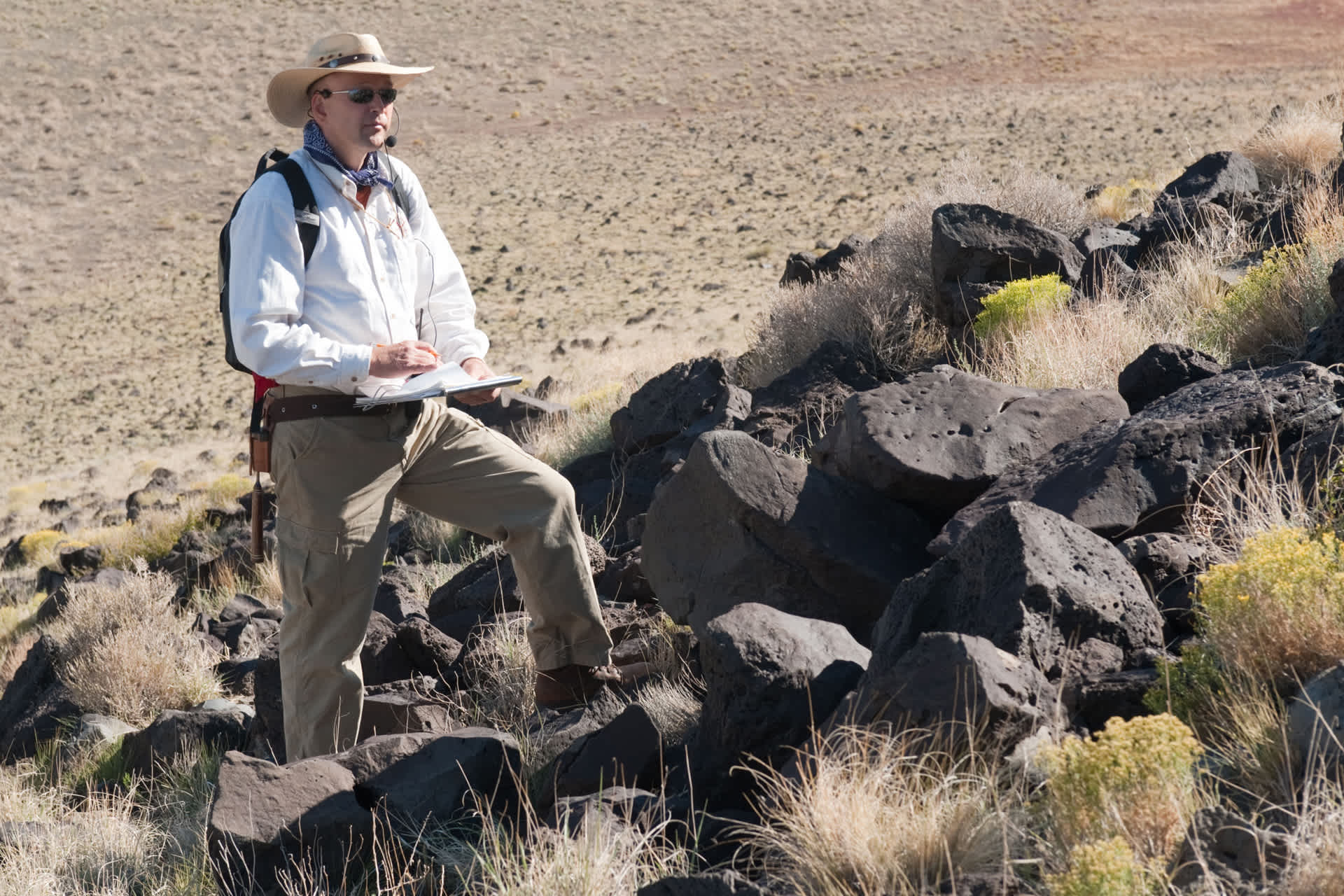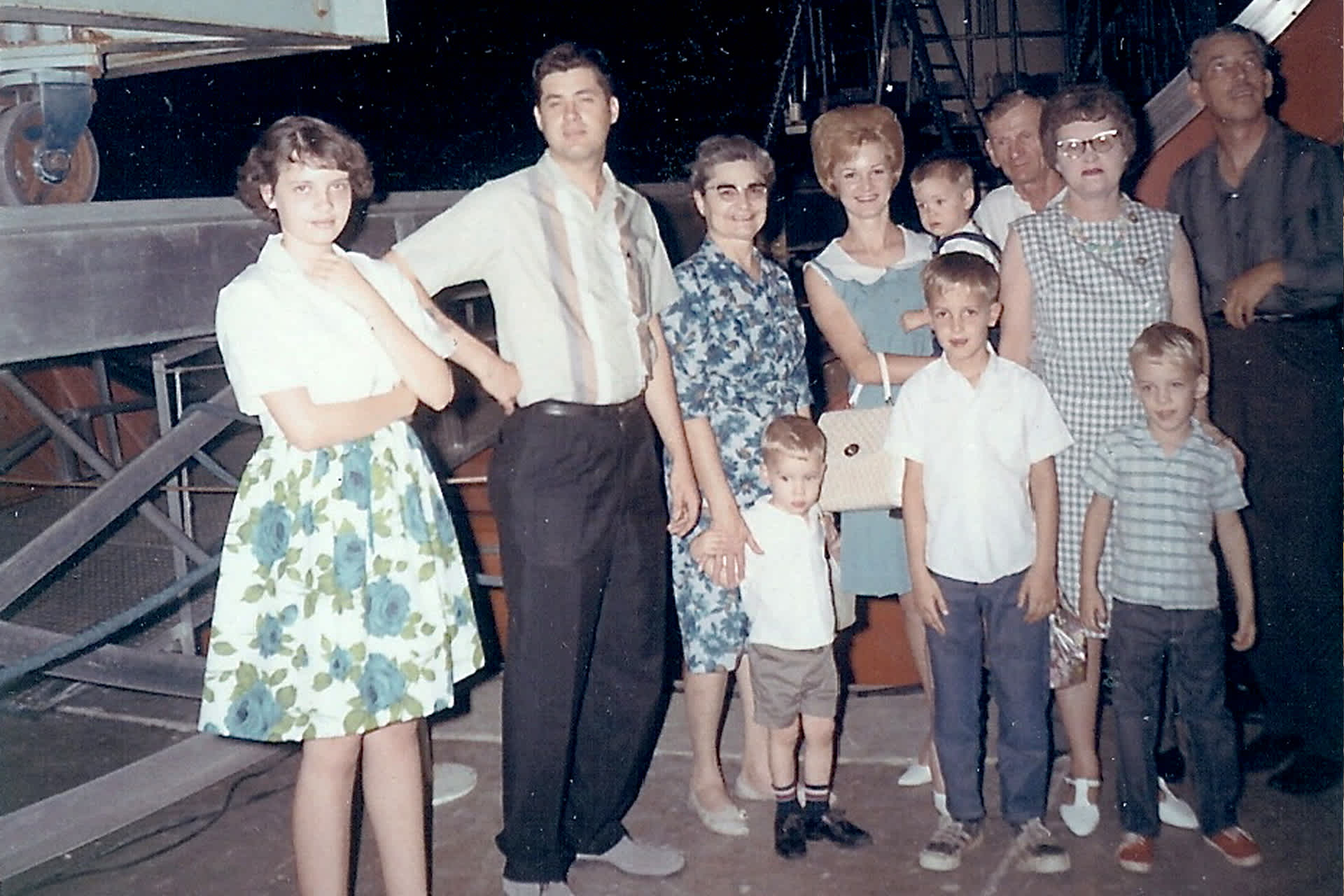NASA’s Dirt Guy

John Gruener is a planetary scientist at NASA. He works in exploration science, which is part of ARES—Astromaterials Research and Exploration Science—at the Johnson Space Center, in Houston, Texas. His department creates lunar simulant, or fake moon dirt, out of Earth soil. NASA scientists use this dirt to test out equipment that will eventually be used on the moon. Recently, they produced oxygen from soil made in Gruener’s lab. It’s a step toward establishing a base on the moon, where astronauts doing long-term research will need an air supply.
Gruener told Your Hot Job how he made a career out of dirt.
We hear about NASA’s rockets and robots. Should people be surprised that NASA also studies dirt?
When the Apollo astronauts [in the 1960s and 1970s] went to the moon and brought back moon rocks and soil, NASA needed a place to put it. It also needed a group of people to curate it, to take care of it, so other researchers could study it in their labs and at universities. So ARES was created out of the Apollo era. It was focused on the moon, its rocks, and soil.
What does a person in exploration science do?
We look at everything we can get our hands on that came from our solar system. We mainly focus on samples here on Earth. Some of that came to Earth as meteorites. We go to Antarctica every few years and collect meteorites and bring them back. They’re very similar to what’s on the moon or Mars. We make libraries of data, so that when we do go to these planets, we can match what our robots are seeing with what we measure here. We just love playing with rocks and soil.
How do you make fake moon dirt?
It’s made from Earth rocks. We crush up rocks to make them the same particle shape as moon dirt. We try to replicate the shape we see on the things that came back from the moon. We try to recreate that gravelly stuff. And then we incorporate minerals. From the rock that came back with Apollo, we have a great idea of what the minerals are. So now we just go look for similar minerals at places around the Earth, and we crush those up into the right particle-size distribution.

How did scientists get oxygen from that? Oxygen is in the structure of rock. There are oxygen atoms. There are silicon atoms, aluminum, calcium, magnesium, and iron atoms, too. They’re all packed together in a crystalline structure. It turns out that about 65% of the atoms on the moon are oxygen, but they’re chemically bound to other atoms. So you have to use a laser to break the chemical bonds between the oxygen atoms and the other atoms. Now you can collect that oxygen.
Why is this significant?
There’s no oxygen on the moon. If we’re going to live and work there for long periods of time, we’ll have to live off the land, using the natural resources there, just like we have done on Earth.
If we decide to build our Artemis base camp, then we’re going to really need to understand the natural resources that are available to sustain us. [Artemis is NASA’s program to send astronauts to the moon and Mars.]
So how did you become a dirt guy at NASA?
It is possible to not know what you want to be when you grow up until you’re already grown up. I came to NASA as an engineer, to build a space station and design lunar bases. That was fun, but I kept asking, “What are we going to do when we get there? Why are we designing these bases?” I started talking with lunar scientists here at the Johnson Space Center, to get a better understanding of what they wanted to do when they got to space. Just outside of the Johnson Space Center, there’s the University of Houston at Clear Lake. I looked at their catalog. They had some classes in geology, the study of the Earth and rocks and soils. And they had some classes on the moon and Mars. Several of us went and talked to the dean, and we designed our own program. We found our own professors to teach us, because we were driven. We really wanted to learn this stuff. After a few years, I got my master’s degree in the physical sciences, in planetary geology. And I made a big flip from engineer to scientist. Ever since then, I’ve been working as a scientist. My role now is to help engineers test and prepare their systems so they can work on the moon someday.
What kinds of things would I see if I visited your laboratory? The first thing you’d notice is that we have lots of buckets and bins full of dirt. It’s all different shades of gray. We have instruments to measure the properties of the dirt. We do a lot of our testing in glove boxes. We’ll put our arms through these rubber sleeves, and we’ll work inside the glove boxes. You don’t want to breathe in the dust. You’ll also see machines that can tumble. Let’s say you’re trying to understand the abrasion of moon dirt on a space suit fabric. You put the fabric inside a tumbler, where it rolls around with rocks and soil. We’ve got tools that the astronauts will use to break rocks.
Did growing up during the Apollo era shape your career goals? It had a huge impact. I was watching Apollo on TV, watching these guys walk on the moon. But I also had the luck of living in Houston. My uncle Don worked at the Manned Spacecraft Center. I could actually visit, and see the Apollo stuff being tested and the astronauts going through their training.

My uncle was a fabulous technician. He didn’t have a college education. But he learned how to be an electrician. And he was a great technician. He gave me a real appreciation for people who do things with their hands. I still like to go in the lab and do things with my hands.
A lot of kids would love to work for NASA someday. What can they do now to prepare themselves for this kind of work? Work hard in all of your classes. You don’t know what you’re going to need for your future job. Get that foundational knowledge, like math, because everything can be modeled by math formulas. Even something like social studies or geography, where you’re learning about different environments and different terrains here on the Earth. Learn that stuff. You might become a person who’s working on the terrains of Mars. No matter what subject it is, work hard to get that broad knowledge. You never know what it is you’re going to wind up doing when you grow up.

